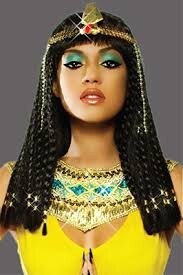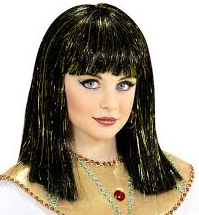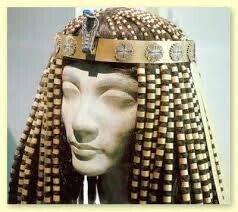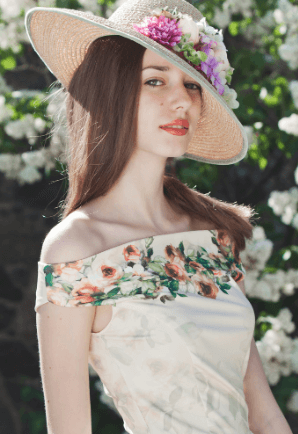Ancient Egyptians are known by many as a historical symbol of ancient beauty, vanity, and hygiene. Appearance was very important in the country near the Nile River. The way people looked was a symbol of their wealth, status, and role in society. The desire for a beautiful body influenced fashion, but the climate and medical issues also formed a unique style.

Beauty in Ancient Egypt
Ancient Egyptian hairstyles varied with social status, gender, and age. A slave could never have the same hairstyle as a free person, and the lower class could never have the same style of hair as the upper class. However, there were some similarities between them. Like nowadays, most people tried to follow the same fashion.
Generally, the hairstyle of children, be they boys or girls, was the same. Their hair was shaved off, with only a long lock of hair left on the side of the head. This style was related to the hieroglyphic symbol of a child or youth.When the children grew older boys kept their shaved heads and girls wore their hair in plaits or something similar to a ponytail. Men usually wore their hair short, with their ears visible. But sometimes they preferred to have short curls covering their ears.
In the case of women, hairstyles were more advanced and unique. They often liked to have their hair smooth or with a natural wave. Women in ancient Egypt also liked to have long curls, but in the Old Kingdom period, they preferred short or chin length bobs.
Egyptians used hair gels made from fatty acids from plants and animals to hold their hair in place. After death, the hair is mummified naturally. There are several reasons for wigs. First, Egyptians don’t like gray hair. They use henna to avoid this problem, but wigs are a better solution in a dry Egyptian climate. Second, many people think the idea is more comfortable than having their own long hair.

The popularity of wigs
Wigs were popular not only in ancient Egypt, but also in Mesopotamia, Crete, Greece and Persia. The most expensive Royal wig looks like real hair. They are made of plant fibers such as flax, wool, other types of animal hair and human hair hardened with beeswax. The cheapest is made of plant fiber. Ancient Egyptians used aromatic oils like fir oil, almond oil, rosemary oil and castor oil to make real hair and wigs. They believe the oil can stimulate the growth of hair.
In the daily life of royal family members, wigs are also used in major festivals and activities. Egyptian wigs are usually made of helmet like structures. Some of them are bright blue, red or green and are decorated with gemstones and jewelry. Upper class people like to wear many wigs. The more wigs they have, the higher their status.
The most classic wig is the Nubian wig, a headdress worn in many periods of history, but it was particularly popular in the 18th dynasty and throughout the new kingdom. In that era, a richly decorated wig was a powerful symbol of fertility associated with the wig worn by the goddess Hathor. The wigs are known from the mausoleums, reliefs and statues of Kiya, Nefertiti, Tiye and other women of this period, and are in part similar to modern African Hairstyles.
In the third middle period, wigs were very heavy. In 900 BC, Queen ISIM HepB was wearing a wig, which was so heavy that she needed the help of her attendants to stand up. Now, wigs are part of the Cairo Museum collection. It’s made by sticking Brown human hair together with beeswax.

Wigs in the afterlife
After death, people were often buried with their best wigs. They wanted to appear as wealthy and with beautiful hair in the afterlife. Because of this practice, many wigs have survived until now and they are parts of exhibitions around the world.


